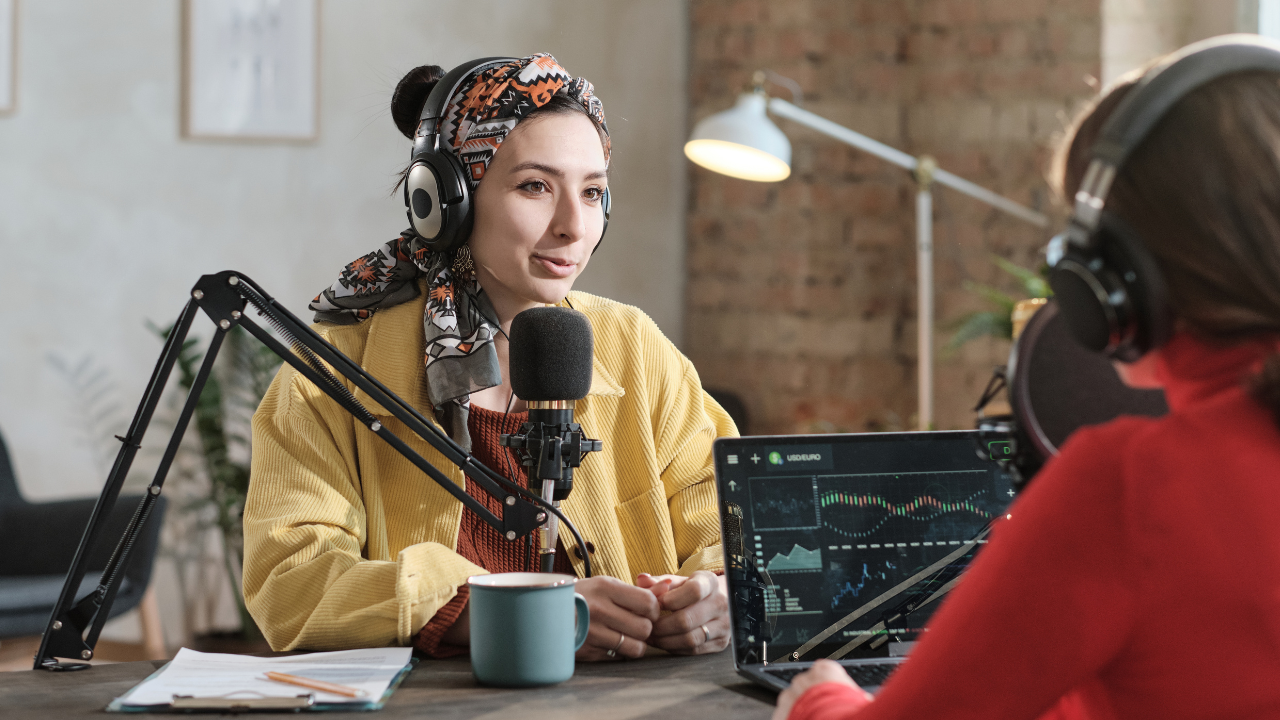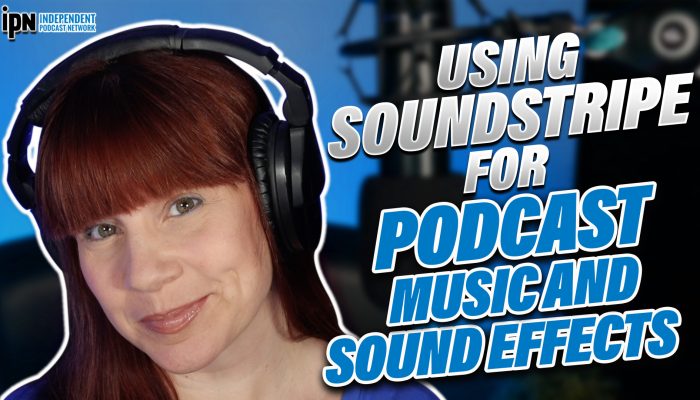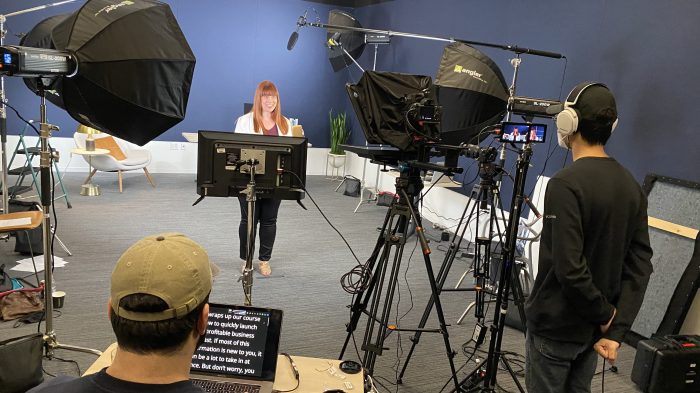
Whether it’s the hum of a computer fan or the roar of traffic outside your window, background noise can ruin an otherwise great podcast recording. But, with the right recording techniques and editing tools, even noisy environments can produce crisp, clean audio.
Common Sources of Background Noise
Background noise can come from almost anywhere. That’s what makes completely avoiding it so difficult. The most common sources of background noise include:
- Environmental noises: External noises like traffic, construction, appliances, and wildlife can easily bleed into your recordings if you’re not in a soundproof space. Even with windows closed, these ambient sounds can be audible if your gain levels are high. Try to minimize them by recording in an interior room away from windows.
- Room acoustics: Hard, reflective surfaces like tile and glass can cause echo and distortion. Bare walls and floors also allow noise to reverberate. Recording in a room with sound-dampening furniture and decor like curtains, carpets, and sofas minimizes these noises.
- Electronic noises: Common electronics like computers, TVs, fans, and HVAC systems generate constant low-level hums. Turn off or unplug anything unnecessary nearby. If that’s unrealistic, move the microphone as far away from the sound source as possible.
- Human noises: Mouth noises, breathing, shuffling papers, and creaking chairs can all create background noise in your podcast recording. So, minimize these noises by always having water ready, wearing headphones, and preparing to stay seated for the duration of your recording.
Recording Techniques to Minimize Background Noise
Before you get to editing out background noise, first you need high-quality recordings. Even when recording remotely, you can still use a few recording techniques to minimize background noise such as:
- Choose a quiet space: Select a room deep within your home or building, away from external noises like street traffic. An interior closet or studio works nicely.
- Use a directional microphone: Use an appropriate microphone for podcasting with a tight cardioid or shotgun mic pattern to isolate your voice and reject side/rear noises.
- Sound treat your recording space: Add sound-absorbing panels, rugs, and heavy curtains to the recording room. Minimize bare hard surfaces.
- Record strategically: For human and environmental noise, record during odd times of the day or night when people sleep or when traffic is light.
- Monitor levels: Keep an eye on your noise floor—around -60dB or lower is ideal. Stop recording and find the source of the background noise when it grows too high.
Editing Techniques to Remove Background Noise
Even with all of the recording tricks in the world, sometimes you still end up with background noise. And, great takes sometimes have a bit of background noise that needs to be cleaned up. A few simple techniques you can use to remove background noise in your podcast editing software include:
Noise Reduction Plugins
Most editing software like Audacity or Adobe Audition have built-in noise reduction features. These work by analyzing the audio to build a noise profile, then subtracting that consistent background noise like fans or room tone. Be careful not to overdo it and muffle the speech.
Replace Sections with High Background Noise
Manually edit out loud transient noises like coughs, chair squeaks, or barking dogs and cut them out completely. Zoom way in on the waveform when editing to make precise cuts. Fade the edges of the edits to smooth and prevent clicks or pops.
Use a Noise Gate
Add a gate effect to automatically mute the audio when you’re not speaking. The audio will dip down to the noise floor, then pop back up when you talk. This eliminates low-level room tones. Set the threshold carefully to avoid choppy audio.
Remove Specific Noise Profiles
Select a short sample of just the background noise, like steady humming or tapping. Then, use noise profiling software to analyze that profile and remove only those frequencies, preserving the voice audio. This works extremely well for consistent noise sources.
Remove Mouth Noises
Edit out any pops, clicks, lip-smacking, and heavy breathing manually. Cut them out or reduce the gain. Stay hydrated, use lip balm, and improve your mic technique to prevent them. If frequent, re-record the section.
Normalize Levels
After noise removal, the audio level may be quieter. Use normalization or a compressor to increase the overall gain and volume. This prevents the cleaned audio from sounding drastically lower than the original raw recording.

Advanced Editing
If you’re not ready to hire a professional audio editor, you can learn a few more advanced audio editing techniques for further reducing background noise. Here are a few advanced techniques for removing background audio.
Spectral Editing
Spectral editing involves visualizing your audio as a spectrogram and pinpointing the exact frequencies where the noise resides. This method can be particularly useful for spotting and removing inconsistent noises that regular noise reduction might not catch. Using spectral editing software like iZotope RX, you can ‘paint out’ the unwanted frequencies, leaving the desired audio untouched.
Multiband Compression
Multiband compression is a powerful tool that allows you to manipulate different frequency ranges independently. For example, if there’s a low-frequency hum, you can compress that specific range without affecting the mid or high frequencies. This technique requires a good understanding of audio frequencies and careful tweaking, but when used correctly, it can significantly clean up your audio.
Dynamic EQ
Dynamic Equalization (EQ) is like a combination of EQ and compression. It allows you to compress or expand specific frequency bands when they exceed a certain threshold. This can be especially useful for removing intermittent noises that only appear at certain times. For instance, if a siren in the background only appears for a few seconds, you can use a dynamic EQ to reduce its impact.
Machine Learning Tools
Cutting-edge machine learning tools are becoming more accessible and can intelligently reduce background noise while preserving speech quality. Software like Krisp or Nvidia RTX Voice utilizes AI to distinguish between human voice and noise, greatly improving the audio quality in real-time or post-processing.
Remember, while these advanced techniques can help you achieve a cleaner recording, the best approach is still to capture the cleanest audio possible at the source.
Conclusion
Background noise can be a thorn in the side of any podcaster, but with these techniques in your arsenal, you should be able to tackle most noise issues confidently. Whether you’re recording in a bustling city or a quiet suburb, knowing how to minimize and remove background noise is essential for producing a professional-quality podcast. Remember, the key to great audio is not just in post-production but also in the recording process. As the adage goes, ‘Garbage in, garbage out,’ so always strive for the highest quality at the source.”









